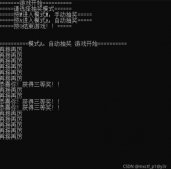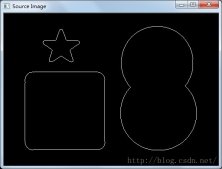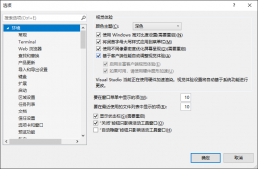概要:
本文简单介绍this指针的基本概念,并通过一个实际例子介绍this指针用于防止变量命名冲突和用于类中层叠式调用的两个用法。
this指针概览
C++中,每个类 对应了一个对象,每个对象指向自己所在内存地址的方式即为使用this指针。在类中,this指针作为一个变量通过编译器隐式传递给非暂存(non-static)成员函数。因为this指针不是对象本身,因此sizeof函数并不能用于确定this指针所对应的对象大小。this指针的具体类型与具体对象的类型以及对象是否被const关键字修饰 有关。例如,在类Employee的非常量函数中,this指针类型为Employee ,若为常量函数,则this指针类型为const Employee 。由于this本身是一个指向对象的指针,因此*this这类去指针操作则得到本类中对象的地址。关于this指针的使用,举例如下:
本文代码引用和免责声明:
|
1
2
3
4
5
6
7
8
9
10
11
12
13
14
|
/************************************************************************** * (C) Copyright 1992-2012 by Deitel & Associates, Inc. and * * Pearson Education, Inc. All Rights Reserved. * * * * DISCLAIMER: The authors and publisher of this book have used their * * best efforts in preparing the book. These efforts include the * * development, research, and testing of the theories and programs * * to determine their effectiveness. The authors and publisher make * * no warranty of any kind, expressed or implied, with regard to these * * programs or to the documentation contained in these books. The authors * * and publisher shall not be liable in any event for incidental or * * consequential damages in connection with, or arising out of, the * * furnishing, performance, or use of these programs. * **************************************************************************/ |
Test.h文件:
|
1
2
3
4
5
6
7
8
9
10
11
12
13
|
#ifndef TEST_H#define TEST_Hclass Test {public: explicit Test( int = 0 ); // default constructor void print() const;private: int x;}; // end class Test#endif /* TEST_H */ |
Test.cpp文件:
|
1
2
3
4
5
6
7
8
9
10
11
12
13
14
15
16
17
18
19
20
|
#include "Test.h"#include <iostream>using namespace std;// constructorTest::Test( int value ) : x( value ){}// print x using implicit and explicit this pointers;// the parentheses around *this are requiredvoid Test::print() const{ // implicitly use the this pointer to access the member x cout << " x = " << x; // explicitly use the this pointer and the arrow operator // to access the member x cout << "\n this->x = " << this->x; // explicitly use the dereferenced this pointer and // the dot operator to access the member x cout << "\n(*this).x = " << ( *this ).x << endl;} // end function print |
main.cpp中的调用示例:
|
1
2
3
4
5
6
7
|
#include "Test.h"int main(){ Test testObject( 12 ); // instantiate and initialize testObject testObject.print(); return 0;} // end main |
本例中,由于this本身是指针,因此类中变量x的读写方式即为this->x。注意由于this变量是隐式传递的,因此在同一个类中的成员函数中直接调用x变量其效果等同于通过this指针调用x。使用去指针化的this变量则获得对象地址,因此通过对象地址调用变量的方式是用点号操作符。
介绍完this指针获取变量的方式之后,接下来本文将介绍this指针的两个作用。
一、this指针用于防止类中的变量冲突
this指针可以用来防止数据域与传入参数变量名相同可能导致的问题。以下列程序为例:
Time.h文件
//此处省略定义头
|
1
2
3
4
5
6
7
8
9
10
11
12
13
14
|
class Time {public: //...此处省略若干行非重点部分 Time &setHour( int ); // set hour Time &setMinute( int ); // set minute Time &setSecond( int ); // set second //...此处省略若干行非重点部分private: unsigned int hour; // 0 - 23 (24-hour clock format) unsigned int minute; // 0 - 59 unsigned int second; // 0 - 59}; // end class Time |
Time.cpp文件:
|
1
2
3
4
5
6
7
8
9
10
11
12
|
// set hour valueTime &Time::setHour( int hour ) // note Time & return{ if ( hour >= 0 && hour < 24 ) this->hour = hour; else throw invalid_argument( "hour must be 0-23" ); return *this; // enables cascading} // end function setHour// set minute 和 set second写法类似 |
此处代码传入参数名为hour,hour被赋值对象也是本类私有变量hour,此时用this指针指向hour变量的方式就防止了命名重复。注意到前述代码的返回值为指向这个对象的指针,这与接下来本文要分析的第二点有关。
二、this指针用于层叠式调用
通过返回类的去指针化的this指针*this,事实上就是返回了类所在的地址。那么此类就可以被层叠调用。如上述Time这个对象,主程序调用示例如下:
main.cpp文件:
|
1
2
3
4
5
6
7
8
9
10
11
12
|
//省略非重要的预处理指令和using命令#include "Time.h" // Time class definitionint main(){ Time t; // create Time object // cascaded function calls t.setHour( 18 ).setMinute( 30 ).setSecond( 22 ); //省略其余非重要部分} // end main |
此处t.setHour其实得到的返回值为&t,那么获取setMinute的方法就是t.setMinute。同样运行t.setHour(18).setMinute(30)之后返回值仍为&t,因此可以继续调用setSecond。
那么,这样返回指向对象的类安全性有问题么?注意,此处类是以整个对象的形式被返回的,并没有出现类中的私有成员地址被返回的情况,因此返回对象地址与返回变量的地址本质是不同的。返回对象之后,对象仍然确保了私有变量的封装性,因此就变量地址造成的安全性问题,此处是不必考虑的。
感谢 阅读,希望能帮助到大家,谢谢大家对本站的支持!
原文链接:https://my.oschina.net/SamYjy/blog/828757














